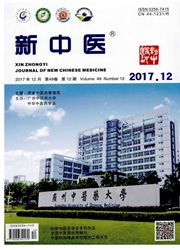

 中文摘要:
中文摘要:
目的:比较几种常见肝郁动物模型的稳定性,重复性,为后续的基础研究提供合理的动物模型。方法:采用夹尾法、束缚筒及束缚架法造模,记录并分析大鼠行为变化,评价模型质量。结果:各模型组大鼠的糖水消耗量和糖水偏爱率显著降低,与正常组比较均有统计学意义(P〈0.01或P〈0.05)。束缚架组、束缚筒组大鼠不动时间明显延长及挣扎次数明显少于正常对照组,均有统计学意义(P〈0.01)。束缚架组、束缚筒组旷场实验各行为指标与正常对照组比较均有统计学意义(P〈0.01或P〈0.05)。结论:束缚架组、束缚筒组模型制备方法可行性较好。
 英文摘要:
英文摘要:
Objective: To explore the stability and repeatability of the animal models of liver - qi stagnation and provide some experimental basis for subsequent basis studies. Methods:Using clip tail method, bound cylin- der of rats and bound rack to make models, recorded and analyzed rats behavior changes, evaluated quality of model. Results: The sugar water consumption and preference rate of rats which in different model group were sig- nificantly decreased, compared with the blank group ,there were significant differences(P 〈 0. 01 or P 〈 0. 05) . The fixed time was obviously prolonged and numbers of struggle of rats in bound rack group and bound cylinder group were significantly less than those in normal control group, the behavior index of bound rack group and bound cylinder group had significant difference in open field test to compare with those of normal group. ( P 〈 0. 01 or P 〈 0. 05 ). Conclusion: The bound rack group and bound cylinder group were more feasibility by evaluation.
 同期刊论文项目
同期刊论文项目
 同项目期刊论文
同项目期刊论文
 期刊信息
期刊信息
